Andrew Grant

Trustworthy journalism comes at a price.
Scientists and journalists share a core belief in questioning, observing and verifying to reach the truth. Science News reports on crucial research and discovery across science disciplines. We need your financial support to make it happen – every contribution makes a difference.
All Stories by Andrew Grant
-
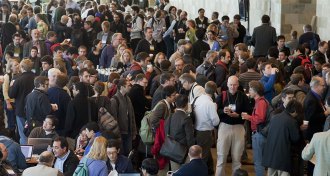 Physics
Physics3-D printed device cracks cocktail party problem
A plastic disk does what sophisticated computers cannot: solve the cocktail party problem.
-
 Quantum Physics
Quantum PhysicsPhysicists get answers from computer that didn’t run
By exploiting the quirks of quantum mechanics, physicists consistently determined what a quantum computer would have done without actually running the computer.
-
 Physics
PhysicsQuest for room-temperature superconductivity warms up
Scientists have demonstrated that a material can conduct electrical current without resistance at temperatures as high as –70° Celsius.
-
 Particle Physics
Particle PhysicsAntimatter doesn’t differ from charge-mass expectations
An experiment with unprecedented precision finds that protons and antiprotons have the same ratio of charge to mass, which is consistent with theories but disappoints many physicists.
-
 Physics
Physics3-D printed device cracks cocktail party problem
A plastic disk does what sophisticated computers cannot: solve the cocktail party problem.
-
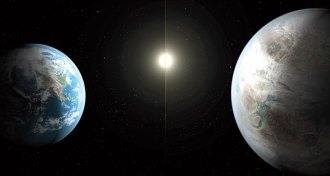 Planetary Science
Planetary ScienceNew exoplanet: Big Earth or small Neptune?
NASA’s Kepler spacecraft has discovered a “cousin” of Earth 1,400 light-years away. But even though the new planet bears many similarities to Earth, experts say much about it remains a mystery.
-
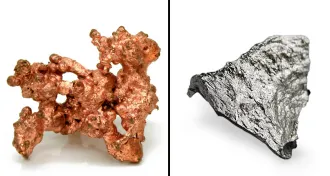 Materials Science
Materials ScienceBuckyballs turn on copper’s magnetism
Exposure to buckyballs bestows ironlike magnetic properties onto the normally nonmagnetic metals copper and manganese.
-
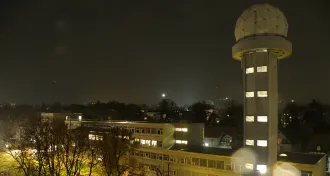 Quantum Physics
Quantum PhysicsQuantum communication takes a new twist
A three-kilometer transmission of light above the Vienna skyline demonstrates that scientists can use the twistiness of light to encode delicate quantum information.
-
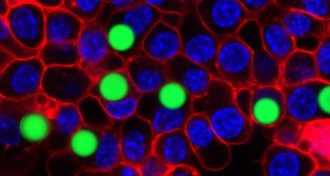 Life
LifeLaser light made inside cells
Microscopic beads and oil droplets become lasers when implanted into cells.
-
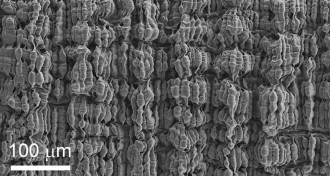 Materials Science
Materials ScienceStretchy fiber lets electrons flow
Folded layers of carbon nanotubes allow an elastic fiber to conduct electrical current when stretched.
-
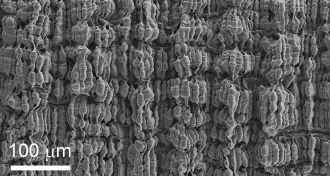 Materials Science
Materials ScienceStretchy fiber keeps electrons flowing
Folded layers of carbon nanotubes allow an elastic fiber to conduct electrical current when stretched.
-
 Physics
PhysicsElusive particle shows up in ‘semimetal’
Weyl fermions, which resemble massless electrons, have been spotted inside tantalum arsenide. Their discovery comes 86 years after they were proposed.